Enzyme-linked Immunosorbent Assay Kit For Triiodothyronine and Thyroid Hormones
1. Introduction
Thyroid hormones are tyrosine monoiodide produced by thyroid follicular epithelial cells, this kind of hormone includes tetraiodothyronine( Thyroxine, T4), Triiodothyronine (T3), and reverse T3(rT3).
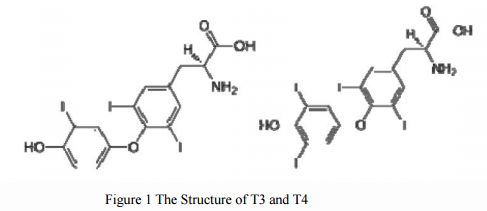
Both T3 and T4 have physiological activity, but with different action time and intensity. T4 has low physiological activity, slow reaction, and long functioning time, while T3 is totally on the contrary. The in vivo study shows, it’s T3 that works in physiological action and most of T4 functions when they turn to T3. That is to say, T4 is more likely a Prehormone, and rT3 does not have obvious physiological activity. T4 get deiodination by deiodinase, which is the main way to become T3 and rT3. The deiodinase have two isotypes, type I and type II. The priority of type I substrate is rT3>T4>T3, while the type II substrate is T4>rT3. T4 was catalyzed to T3 with stronger physiological activity when organism needs more thyroid hormones stimulation, and this is the main resource of T3 in normal condition. On the contrary, T4 turns to rT3 when thyroid hormones are enough for the body. The process is shown in Figure 2.
2. Significance and Method
Detection of T3 and T4 in serum not only has great significance on diagnosing and observing the curative effect, but also has reference value on diagnoses of non-thyroid diseases, such as nephrotic syndrome, acromegaly, hypercortisolism, and so on. Further, it acts as one of judgement indexes of thyroid function on liver cirrhosis and renal failure.
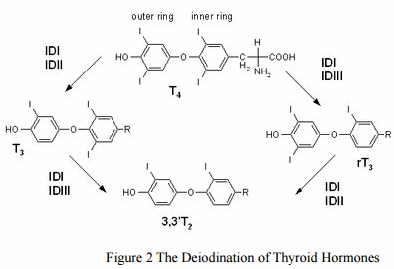
Although the free T3 (FT3) and free T4 (FT4) in peripheral blood are low, they function in biological processes by binding on the receptors after entrance into target cells. So serum FT3 and FT4 act as the final active hormone in physiological processes, they have great diagnostic value on thyroid disease and reflect more real thyroid functional status than total T3(TT3) and total T4(TT4).
Currently, FT3 and FT4 are increasingly important in non-thyroidal illness diagnose, like kidney disease, diabetes, heart disease, hepatopathy, encephalopathy, Sheehan's disease, and so on. The clinical assay methods are not designed for free hormone detection directly, which leads to further demand of improvement of test stability and repeatability. As most of thyroid hormones bind to plasma proteins, the level of TT3 and TT4 do not only related to thyroid hormones level, but also related to binding protein. If there are no factors to influence the binding protein of patients, then the detection of TT3 and TT4 are better than FT4 and FT3 detection in precision, stability and repeatability.
The methods to detect serum FT3 include radio-immunoassay, enzyme immunoassay, CLIA, time resolved fluorescence immunoassay, ECLIA, and so on.
3. The T3 Assaying kits in USCN
Cloud-Clone Corp. had developed two kinds of kits by molecular modification and coupling technology—ELISA kit (CEA453Ge) and CLIA kit (CCA453Ge). As T3 is a hapten with molecular weight of 650 Dalton, it does not have immunogenicity, so, it needs to get immunogenicity by coupling to specific vectors.
The detection rang of CEA453Ge is 123.46-10000pg/mL. It has high sensitivity and specificity for detection of Triiodothyronine (T3). No significant cross-reactivity or interference between Triiodothyronine (T3) and analogues was observed. The standard curve is shown as below.
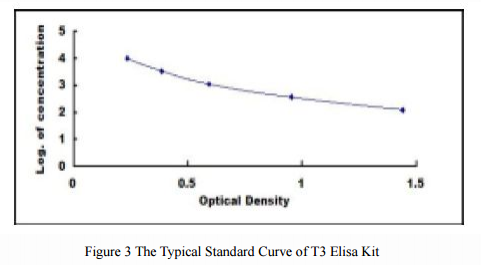
For more information, please enter http://www.cloud-clone.com/products/CEA453Ge.html
4. Thyroid Hormones series Elisa kit
Besides, Cloud-Clone Corp. has also developed ELISA kit for T4 (CEA452Ge) and rT3 (CEC022Ge) detection.
The detection range of CEC022Ge is 3.7-300ng/mL. The standard curve is shown as below.
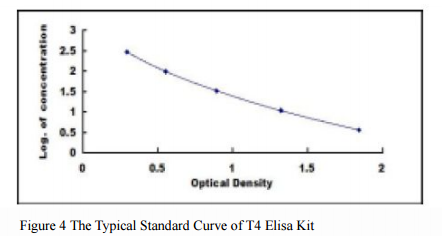
For more information, please enter http://www.cloud-clone.com/products/CEA452Ge.html
The detection range of CEC022Ge is 3.7-300ng/mL. The standard curve shows as below
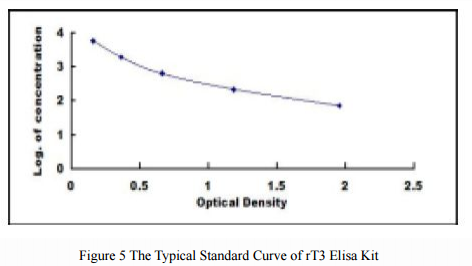
For more information, please enter http://www.cloud-clone.com/products/CEC022Ge.html
